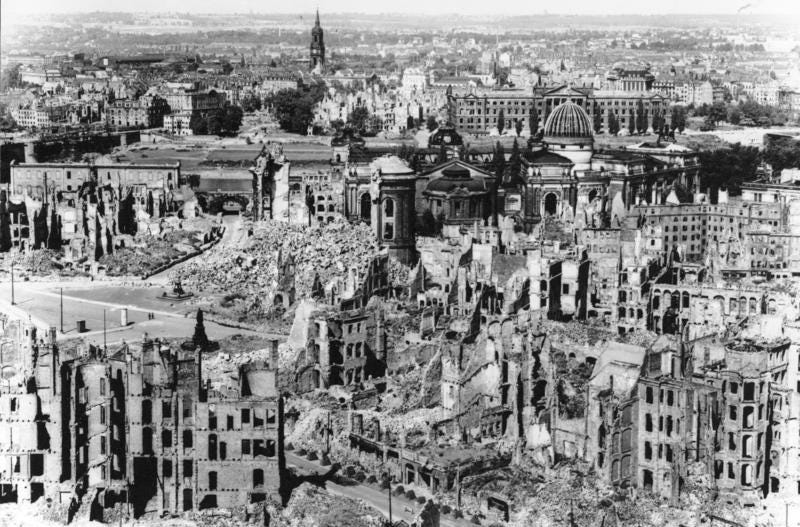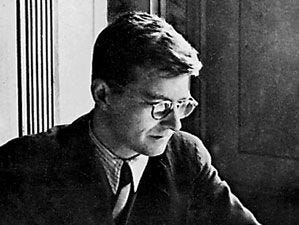Deep Dive: Shostakovich's String Quartet No. 8
Duration: ~20 minutes
Premiered: 1960
Listen:
Overview
Dmitri Shostakovich's String Quartet No. 8 in C minor, Op. 110, is a dark and deeply personal work that stands as a powerful testament to the composer's life and experiences. Composed in just three days during a visit to Dresden, a city devastated by the bombings of World War II, this quartet is dedicated "to the victims of fascism and the war." It is both a lament for the tragedies of the 20th century and a reflection of Shostakovich's personal struggles under Soviet rule.
The quartet is laced with the composer's own 4-note musical signature, D-E♭-C-B, derived from the German notation of his initials, D. Sch. This motif recurs throughout the work, interwoven with other themes from his previous compositions, creating a sense of retrospection.
Political Turmoil and Personal Struggles
The weight of living under an oppressive regime and the scars it left on Shostakovich are evident in this quartet. It is said that after completing it, he shared with friends that he imagined it as an obituary of sorts, a reflection on his own life and the trauma endured by his homeland.
Listening Guide
Largo
Opening with hauntingly sparse chords, the introduction of Shostakovich's personal motif, D-E♭-C-B, acts as a backbone. Listen for the delicate interplay between all four instruments as they pass off these 4 notes to each other. Also listening to the hauntingly beautiful conversation between the first and second violin.Allegro molto
Immediate tension is built with frenetic, staccato bowing, offering a stark contrast to the preceding movement. Focus on the dynamic changes, the almost panicked intensity, and how each instrument seems to be racing against the other. At one point, Shostakovich quotes himself by incorporating the "Jewish Theme" from his Piano Trio No. 2, highlighting its klezmer-influenced melodies.Allegretto
The third movement introduces a sort of “demented waltz”, filled with dissonant harmonies and aggressive rhythms. Pay attention to the playful pizzicato sections, which are juxtaposed against the somber bowing, painting a vivid soundscape of tragedy intermingled with fleeting moments of light.Largo
The most jarring of the movements. At the beginning you can hear the low drone of the first violin, imitating a circling airplane in the distance. This is followed by 3 banging sounds from the remaining 3 instruments. While the intention of these banging sounds is up for debate, it is easy to picture them as exploding bombs, or even knocks at the door from the Gestapo. This section is followed by the lower three instruments playing the theme from a Russian funeral tune, which then gives way to a melody, in the cello's upper range, of an aria in Shostakovich's opera Lady Macbeth of Mtsensk.Largo
As the quartet concludes, there's a feeling of return, reminiscent of the first movement. The personal D-E♭-C-B motif re-emerges, intertwined with layers of counterpoint. The ending, with its prolonged decrescendo, can feel like a slow extinguishing, almost like the final flickers of a candle. There is an immense feeling of surrender in the final moments of the piece, and it often takes the listener some time to realize the piece has concluded.
Join the Conversation on Warpcast!
If this piece has sparked thoughts or emotions, I encourage you to continue the conversation on the Warpcast Classical channel. Dive deeper into Shostakovich, explore other influential compositions, or unearth lesser-known masterpieces. If you've stumbled upon intriguing stories from the world of classical music, share them with our community. And if you're eager to discuss further, shoot me a DM on X/Twitter for an invite!





